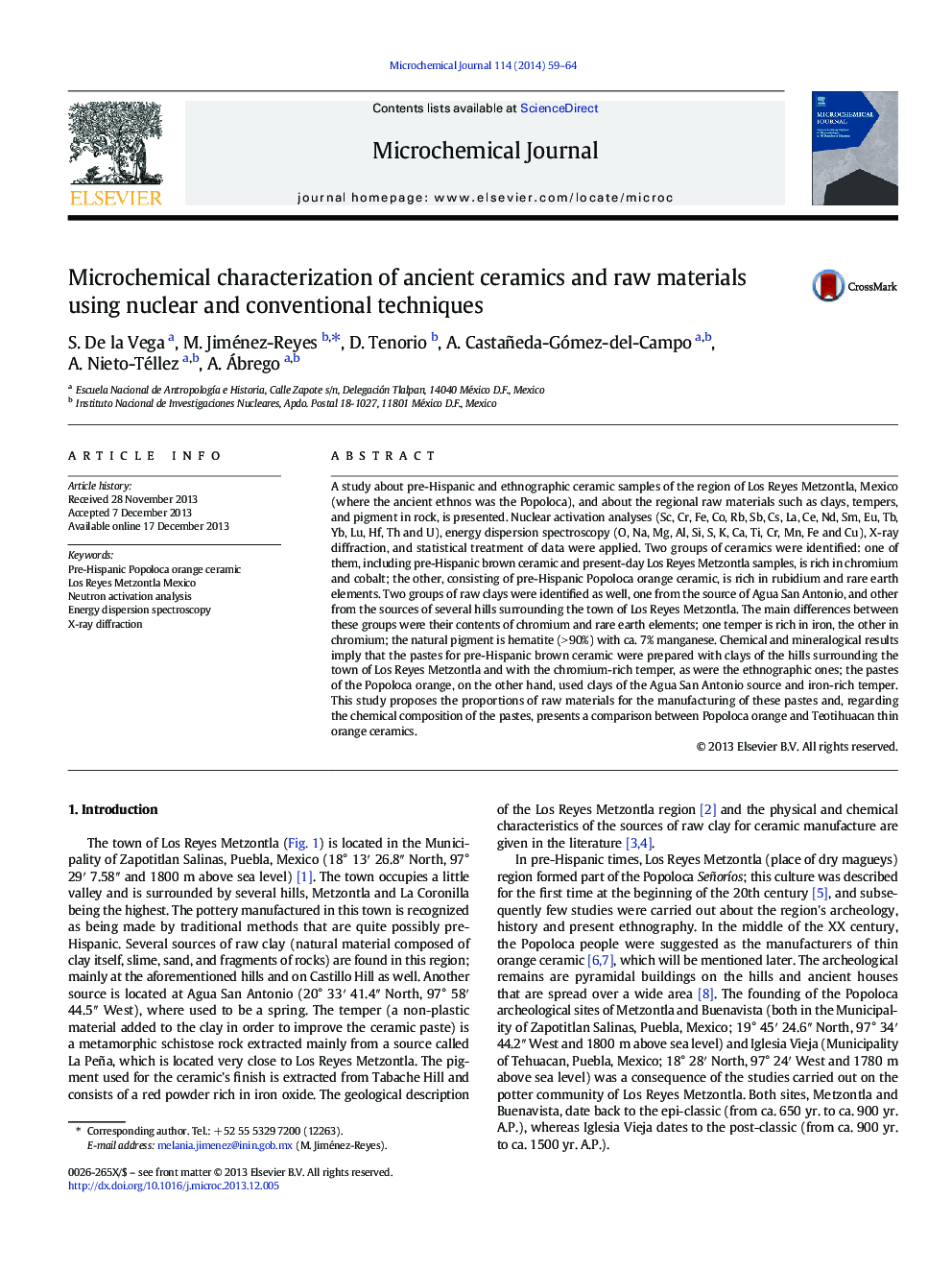| Article ID | Journal | Published Year | Pages | File Type |
|---|---|---|---|---|
| 7643115 | Microchemical Journal | 2014 | 6 Pages |
Abstract
A study about pre-Hispanic and ethnographic ceramic samples of the region of Los Reyes Metzontla, Mexico (where the ancient ethnos was the Popoloca), and about the regional raw materials such as clays, tempers, and pigment in rock, is presented. Nuclear activation analyses (Sc, Cr, Fe, Co, Rb, Sb, Cs, La, Ce, Nd, Sm, Eu, Tb, Yb, Lu, Hf, Th and U), energy dispersion spectroscopy (O, Na, Mg, Al, Si, S, K, Ca, Ti, Cr, Mn, Fe and Cu), X-ray diffraction, and statistical treatment of data were applied. Two groups of ceramics were identified: one of them, including pre-Hispanic brown ceramic and present-day Los Reyes Metzontla samples, is rich in chromium and cobalt; the other, consisting of pre-Hispanic Popoloca orange ceramic, is rich in rubidium and rare earth elements. Two groups of raw clays were identified as well, one from the source of Agua San Antonio, and other from the sources of several hills surrounding the town of Los Reyes Metzontla. The main differences between these groups were their contents of chromium and rare earth elements; one temper is rich in iron, the other in chromium; the natural pigment is hematite (>Â 90%) with ca. 7% manganese. Chemical and mineralogical results imply that the pastes for pre-Hispanic brown ceramic were prepared with clays of the hills surrounding the town of Los Reyes Metzontla and with the chromium-rich temper, as were the ethnographic ones; the pastes of the Popoloca orange, on the other hand, used clays of the Agua San Antonio source and iron-rich temper. This study proposes the proportions of raw materials for the manufacturing of these pastes and, regarding the chemical composition of the pastes, presents a comparison between Popoloca orange and Teotihuacan thin orange ceramics.
Related Topics
Physical Sciences and Engineering
Chemistry
Analytical Chemistry
Authors
S. De la Vega, M. Jiménez-Reyes, D. Tenorio, A. Castañeda-Gómez-del-Campo, A. Nieto-Téllez, A. Ábrego,
